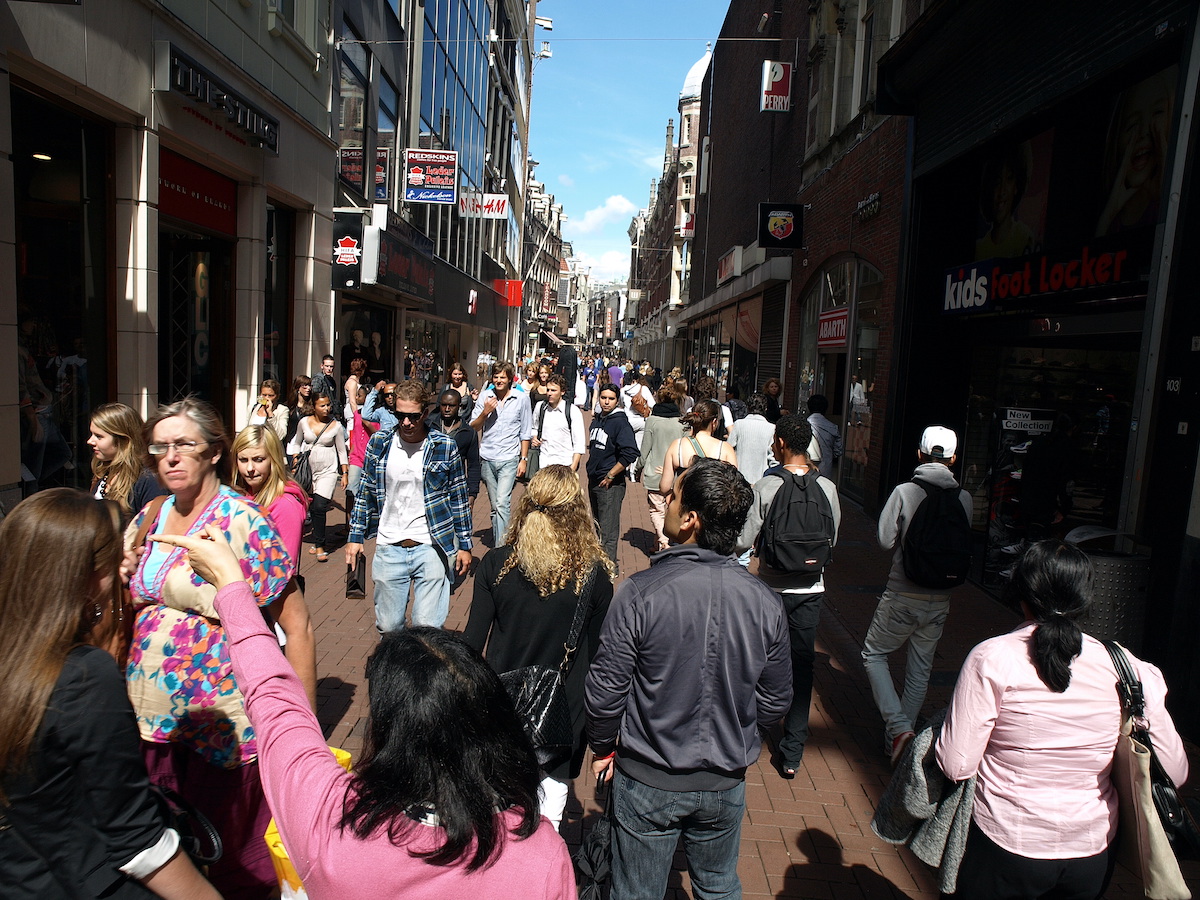Tourists want to pay for less crowd at destinations
There is an optimal crowd that tourists find pleasant and people are even willing to pay for it. Tourists also want to adjust their travel behavior if it is too busy somewhere. This is the result of innovative research in the Experience Lab of Breda University of Applied Sciences, Tilburg University, and KU Leuven, commissioned by the Data & Development Lab of CELTH, NBTC, and CBS.
Understanding crowds is important to be able to take the right measures. Too many and incorrect measures can affect the earning capacity of the sector or be ineffective. In addition, there was a lack of 'burden of proof' for control measures. That burden of proof has now been delivered in the study 'Experiencing overtourism: emotions, behavioral intentions, and policy opportunities at crowded destinations'.
Lead researcher Marcel Bastiaansen: “This research contributes to liveable tourist destinations and fits seamlessly into our research program 'Leisure for a better society'. Tourist attractions such as Amsterdam, Kinderdijk, or Volendam are almost literally in danger of being overrun, with all the social and societal problems that entail. If you can contribute to finding policy solutions from an experience perspective, you also contribute to a better society.”
How was the research set up?
For this study, the researchers measured the emotional response to crowding density. In the Experience Lab, the respondents were shown 360-degree images of busy places through VR glasses. The emotional response was measured via an EEG and the possible behavioral change with a questionnaire. The study included 20 students representing backpacker tourists and 25 adults with young children representing the typical day tripper. In the experiment, participants were shown 360-degree images of six Amsterdam locations: Kalverstraat, Negen Straatjes, Prinsengracht, Museumplein, Dam Square, and the square in front of Central Station. They viewed these images with a VR headset and were shown different levels and proximity of crowds.
How do tourists experience crowds?
Overall conclusion is that tourists do not like places that are too crowded, but also completely empty places. Both the intensity of the crowds and the distance from others are important here. Busy spots give a negative emotional response to the EEG that measured the respondents' brain activity. The proximity of crowds produces a much more negative emotional response than crowds themselves. Tourists find it especially annoying when they are 'surrounded' by others and then even show flight behaviour.
Do tourists want to pay for an optimal feeling of crowds?
Another important conclusion from the study is that most tourists (84%) are willing to pay a fee if a place has optimal crowds as a result. For most respondents, 5 euros is an acceptable amount. Half also want to pay 10 euros. However, this will not be easy in many cities due to ethical, logistical and safety aspects. According to the researchers, if the revenues are used to manage crowds better, so that quality of life is improved, support for such measures could increase.
Do tourists choose a different destination or travel period when it is busy?
Sending tourists also appears to be effective: a majority (68%) adjust their travel plans if they receive travel information about the crowds in the area prior to the trip. Most of them still go to the same city but visit less crowded locations or adjust their schedule. Others choose a different destination or travel period.
Do tourists allow themselves to be sent to their destination?
Once they are at their destination, they can be guided with real-time traffic information, for example by adjusting their schedule or avoiding crowded locations.
What can we do with the conclusions?
These conclusions provide important input for destination managers who can then take effective measures to reduce crowds. They can effectively influence tourist flows with the right information at the right time. It therefore seems advisable to focus on developing information tools (apps for smartphones, on-site digital information screens) that inform tourists about the expected and current crowds at the destination. Even better, personal contact with tourists in, for example, tourist information centers, with city ambassadors on the street and in conversations via social media or chats, as previous DDL research has shown.
Summarizing
Emotional responses to different levels of crowding and closeness clearly show that optimal levels of crowding and distance exist. To avoid crowds, people are willing to pay entrance fees to a destination and to adjust travel and activity plans when given information about expected crowds before or during their trip. The results provide clues and support for destination managers to develop effective policies to reduce crowding.
Read further?
The complete study can be requested via communicatie@celth.nl.



